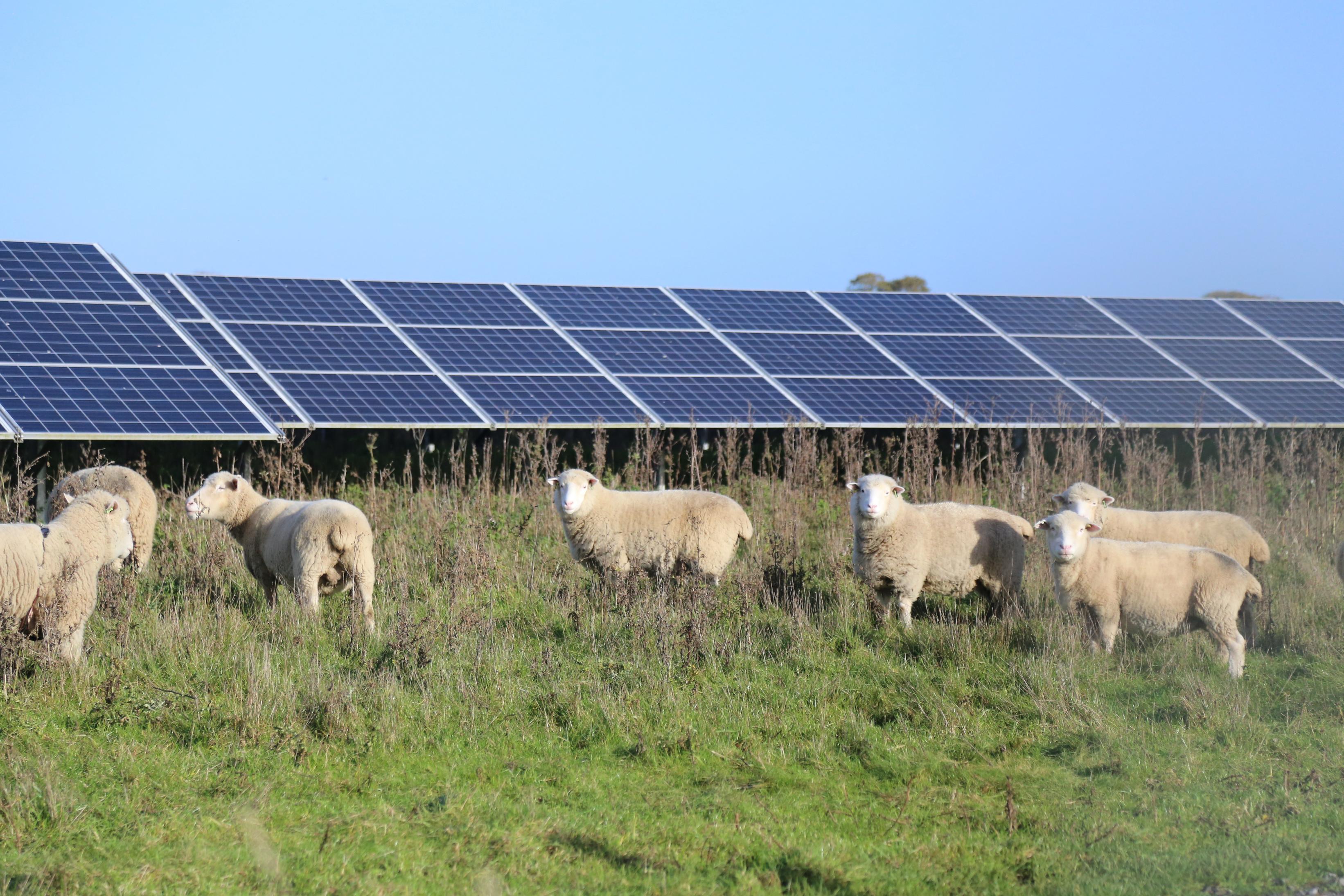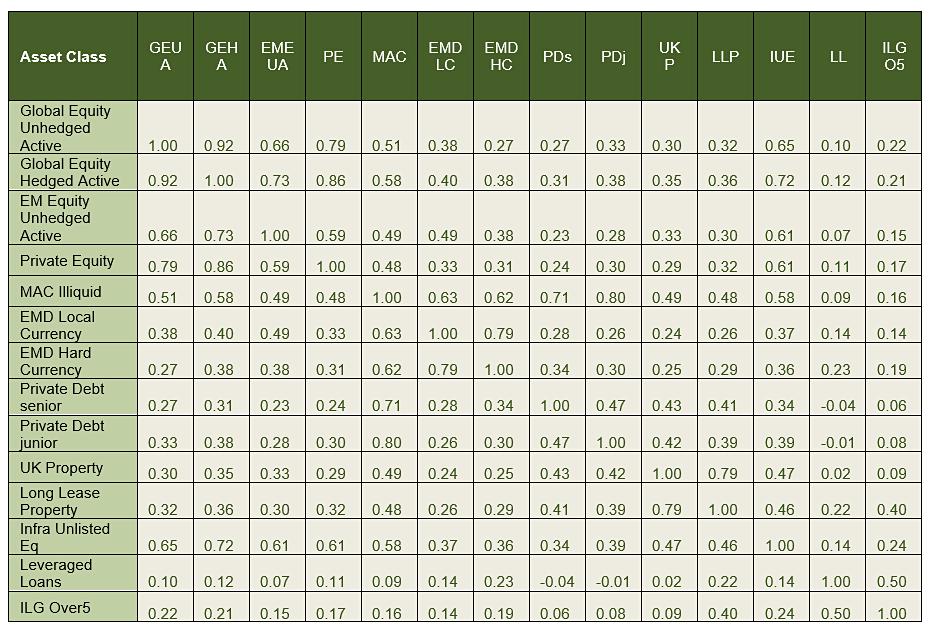INVESTMENT STRATEGY STATEMENT





The Local Government Pension Scheme (LGPS) is available to all local authority employees and the staff of certain other public and associated bodies, apart from police and fire officers and teachers, who have their own specific schemes.
The LGPS is a funded defined benefit scheme. The rate of contributions paid by Scheme members and the calculation of benefits paid to them are contained in the statutory provisions Employer bodies also contribute to the cost of the Scheme.
The LGPS is administered by individual “administering authorities”, these being prescribed in statute. Wiltshire Council is the administering authority for the County area of Wiltshire, including Swindon. It has delegated this function to the Wiltshire Pension Fund Committee (the Committee).
Administering authorities are responsible for the administration of a Pension Fund established on behalf of all employer bodies in their Scheme. The Funds are not separate legal entities from administering authorities and therefore are not covered by trust law. Nevertheless, the role of the administering authority is very similar to that of a trustee and members of the Committee therefore act in a quasi trustee role
The Local Government Pension Scheme (Management and Investment of Funds) Regulations 2016 required administering authorities to formulate and to publish a statement of its investment strategy, in accordance with guidance issued from time to time by the Secretary of State. A link to the guidance on maintaining the ISS can be found at the link below:
https://www.gov.uk/government/publications/local-government-pension-schemeguidance-on-preparing-and-maintaining-an-investment-strategy-statement
This ISS is a living document and is an important governance tool for the Fund. This document sets out the investment strategy of the Fund, based on its current policies and provides transparency in relation to how the Fund investments are managed, acts as a risk register, and has been kept short, in order to be read in as user-friendly manner as is possible.
The Fund also has a Responsible Investment Policy (RI Policy), which will be reviewed and updated annually The RI Policy is an integral part of the ISS, and can be found here: https://wiltshirepensionfund.org.uk/Policies-and-strategies-investments
This statement will continue to be reviewed by the Wiltshire Pensions Committee at least triennially or more frequently should any significant change occur.
This Investment Strategy Statement was reviewed following an updated Strategic Asset Allocation agreed by the Pension Fund Committee at its 17 November 2022 meeting.


The primary objective of the Fund is to provide pension and lump sum benefits for members on their retirement and/or benefits on death before or after retirement for their dependants, in accordance with LGPS Regulations, whilst at the same time seeking to minimise the contributions that need to be paid in to the Fund by employer bodies.
The level of employer contribution is assessed every three years through an actuarial valuation of the Fund. This valuation establishes the solvency position of the Fund, that is, the extent to which the assets of the Fund are sufficient to meet the Fund’s pension liabilities accrued to date The objective is that the Fund should be at least 100% funded on an ongoing basis, taking account of any additional contributions paid by employer bodies to cover any past service deficit. The projection is that full funding is achieved over a time frame agreed appropriate by the Actuary for each employer, as set out in the Funding Strategy Statement.

All Local Government Pension Scheme (LGPS) funds have to produce, consult on and publish a document called a “Funding Strategy Statement” (FSS). The purpose of the FSS is:
a) To establish a clear and transparent fund-specific strategy which will identify how employers’ pension liabilities are best met going forward;
b) to support the regulatory framework to maintain as nearly constant employer contribution rates as possible; and
c) to take a prudent longer-term view of funding those liabilities.
However, there will be conflicting objectives which need to be balanced and reconciled.
For example, for most employers, objective a) implies low contribution rates, because they would see pension liabilities being “best met” by gaining as much help as possible from the investment strategy over the long term, which would lead you towards an equity-biased investment strategy.

https://www.wiltshirepensionfund.org.uk/me dia/5113/funding-strategy-statementfinal pdfhttps://wiltshirepensionfund org uk/P olicies-and-strategies
By contrast, objectives b) and c) imply stability and prudence of employer contribution rates, which would lead you towards a bond biased investment strategy. Therefore, the best that can be achieved is a sensible balance between these different objectives, while considering the affordability of employer contributions
The FSS and ISS are intrinsically linked and together aim to deliver stable contribution rates for employers and a reduced reliance on employer contributions over time The FSS can be viewed at;
These are set out in the Local Government Pension Scheme (Management and Investment of Funds) Regulations 2016, which outline the wide investment powers allowing committees to invest in line with its ISS, with certain restrictions as long as proper advice has been obtained
The Secretary of State also now has the power to direct should an authority fail to act in accordance with the guidance issued under these regulations.
The Committee has freedom to operate within the Regulations and its policy is outlined below. Its expectation, however, is that the majority of assets are invested in major stock markets, where the underlying investments can be easily traded if required
The Fund therefore invests in pooled funds managed by properly authorised organisations (equities, property, infrastructure and government bonds) and sterling and overseas cash deposits. The Fund also hedges a proportion of its overseas currency exposure to equities. It may also invest in futures and options, as well as limited investment in direct property The Fund also invests and has commitments to private markets mandates, including Infrastructure, Private Equity, Private Lending & Secured Finance.
The Committee is responsible for overall investment policy and for the implementation of appropriate investment management arrangements. In carrying out this role, the Committee receives advice from its Investment Consultant (Mercer) and from the Head of Wiltshire Pension Fund and the Treasurer to the Pension Fund (the Director of Finance and Procurement) The Committee is also supported by its Independent Adviser (Anthony Fletcher). It appoints external investment managers to implement investment policy, who are therefore responsible for day to day investment decisions Increasingly, as implementation of pooling takes place, the Brunel Pension Partnership Limited (“the pool”) will be responsible for the appointment of external investments managers to implement the Fund’s investment policy
The Committee believes these arrangements strike the right balance between their own overall responsibilities in acting in a quasi trustee role and having decisions taken with the most appropriate level of expertise available
An explanation of the relative amount to be invested in each asset class (type of investment) is provided below by the strategic benchmark adopted by the Committee However, that does not mean that these percentages need to be rigidly maintained and ranges are shown to outline the maximum and minimum investments.
Based on the Fund’s current target portfolio, the Fund invests 24 0% on a passive (index tracking) basis and 76.0% on an active basis (to outperform the benchmark). In the long-term investment strategy the Fund’s passive (index tracking) investment allocation is 19 5% and therefore 80 5% on an active basis

The Committee recognises that the past is not a reliable guide to the future in respect of predicted returns on investment. In addition, it recognises that the range of expected returns is greater for some asset classes than others and that the prospect of higher returns is usually accompanied by higher levels of risk The target return set by the actuary at the valuation is 2.0% per annum in excess of gilt yields. Based on the Actuarial valuation carried out by Hymans, this is currently estimated at 4.1% p.a.
The Committee regards the major control of risk to be required at the strategic asset allocation level and this has been taken into account in setting its overall investment strategy This is explored later in the document, but the key themes for the Fund include equity risk, inflation and interest rate protection.
The Committee is less attracted to tight regional benchmarks that encourage managers to stay close to the benchmark for their own risk control reason, so the Fund’s investments are increasingly moving towards unconstrained approaches, typically benchmarking against World Indices or Inflation plus targets.
All risks are continually monitored and a high level asset allocation review is undertaken annually to check the appropriateness of the Fund’s current strategy.
The investment objective is therefore to maximise returns subject to an acceptable level of risk whilst increasing certainty of cost for employers, and minimising the long term cost of the Fund. Having a thorough understanding of the risks facing the Fund is crucial and these are covered later in this statement.
Funding, investment strategy and contribution rates are linked.
The strategic asset allocation is the key factor in determining the risk and return profile of the Fund’s investments.
Investing over the long term provides opportunities to improve returns.
Diversification across asset classes can help to mitigate against adverse market conditions and assist the Fund to produce a smoother return profile due to returns coming from a range of different sources
Managing risk is a multi-dimensional and complex task but the overriding principle is to avoid taking more risk than is necessary to achieve the Fund’s objectives.
Environmental, Social and Governance factors, including Climate Change are important factors for the sustainability of investment returns over the long term.
In order to protect the Fund’s investments into the future, the Fund supports a global warming scenario of well below 2°C, and states an ambition to achieve net-zero carbon emissions across all investment portfolios by 2050.
THE FUND HAS FORMED THE FOLLOWING INVESTMENT BELIEFS WHICH HELP TO INFORM THE INVESTMENT STRATEGY DERIVED FROM THE DECISION MAKING PROCESS.
Value for money from investments is important, not just absolute costs. Asset pooling is expected to help reduce costs over the long-term, whilst providing more choice of investments, and therefore be additive to Fund returns
High conviction active management can add value to returns, albeit with higher short-term volatility
We seek to invest in a way that, where possible, aligns the interests of the Fund with those of the contributing employers and the Fund membership.
Investing with a positive social and environmental impact is an increasingly important issue for investors, and can be achieved alongside competitive market returns. Investing with impact can also help incorporate risk and return drivers which would otherwise not be considered. The Fund wishes to invest in a way that minimises negative impacts on society and the environment, and where possible, makes a positive contribution.
Stewardship and engagement are generally more effective tools than divestment in encouraging changes that will help safeguard the Fund’s investments. The Fund values the benefits of working with other investors to strengthen these activities and achieve better outcomes
The objectives of the Wiltshire funding policy are expressed in its FSS. The Fund has a very strong employer covenant, being funded substantially by tax-raising local authorities. Therefore, the Committee can adopt a long-term view, without concern about the ability of its sponsors to meet their liabilities.
Given the on-going restructuring of public bodies the Fund is now maturing increasingly faster. The positive cashflow position is declining (investment income is available if the Fund does go cashflow negative) and this position is being closely monitored The recent changes made to the Fund’s long-term investment strategy, with increased allocations to income generating assets, will help with ongoing cashflow needs. At this time, following the review in November 2022, it is not felt necessary to change the investment strategy of the Fund any further
As the Fund has a small surplus of assets against liabilities (102% funded at the 31 March 2022 Triennial Valuation), the Committee wishes to employ the appropriate amount of risk in order to maintain the funding level close to 100%
Over time as the funding level has increased, the Committee have reduced the level of risk inherent in the investment strategy, in order to protect the strong funding position, whilst being mindful that a degree of future investment return and therefore risk is necessary to maintain the funding level over time.
It is all the employer organisations in the Fund who feel the result of unstable employer rates, and for the precepting authorities, ultimately the local tax payer either through the Council Tax or through service levels. Therefore, another very important consideration is the need for relative stability of investment returns, given that employee rates are fixed by statute and the tools available in the actuarial valuation process for smoothing of returns are limited This can be achieved by investments that are inherently more stable, such as bonds. However, it is also aided by diversification (so that the ups and downs on particular investments do not arise together), and by seeking returns from both passive investments (market based risk) and additional returns from active investment management

Consequently, the Committee has set an overall investment goal that reflects these four factors.
The Wiltshire Pension Fund’s investment objective is to achieve a relatively stable “real” return above the rate of inflation over the long term, in such a way as to minimise and stabilise the level of contributions required to be paid into the Fund by employer bodies in respect of both past and future service liabilities.
A relatively large allocation to equity investment to achieve higher returns;
Allocations to more diversified and less correlated asset classes such as bonds, property, infrastructure, multi-asset credit and private markets to achieve stabilisation; and
The Committee took the decision, following the 2019 review, to de-risk the Fund’s investment strategy, which involved a reduction in the allocation to equities and alternative growth assets, in order to increase the allocation to income generating assets and protection assets. It has taken some time to move towards the new long-term strategic asset allocation; therefore an interim asset allocation was used to benchmark progress towards the long-term asset allocation

Where commitments to private market mandates have been made, the Fund seeks to attain exposure to these asset classes in the interim to their drawdown of commitments through the use of asset classes that have moderate to strong correlation (risk and return) to that of the private market asset class, while being sufficiently liquid to ensure monies can be sourced efficiently for drawdowns.
The Fund’s long-term target strategic asset allocation, along with an overview of the role each asset class plays is set out in the table adjacent.
The maximum allocations outlined in the table above may be amended with the approval of the Pension Fund Committee for specific transition events when terminating or changing investment managers.

*BPP have not initially offered an Emerging Markets Multi-Asset Fund, so the Fund will need to go through the Create/Amend/Delete (‘CAD’) process for this mandate.

Three-year targets are generally preferred when monitoring investment managers because of the need to see clear evidence of added value as soon as possible. The Committee recognises, however, that three-year periods may not be appropriate for particular managers ’ styles, or for specific asset classes. Five year rolling periods, rather than three-year periods, are therefore adopted where appropriate. Further, even longer measurement periods may be appropriate for the Fund’s investments in private markets (for example 7-10 years for private equity).
The Pensions Committee is responsible for the Fund’s strategic asset allocation which is determined via a triennial strategy review as part of the valuation process The review is both qualitative and quantitative and is undertaken by the Pension Committee in conjunction with the actuary, officers and independent advisers.
The required level of return that will ensure that the Fund can meet its future benefit obligations as they fall due.
The level of risk that the Fund can tolerate in absolute terms, and in relation to its funding level and deficit.
An analysis of the order of magnitude of the various risks facing the Fund is established so that a priority order for mitigation can be determined
The desire for diversification across asset class, region, sector, and type of security. Approach to how environmental, social or corporate governance considerations are taken into account in the selection, nonselection, retention and realisation of investments.

The Committee takes the view that the Fund should only take as much risk as is necessary to recover the deficit and maintain contribution rates at an affordable, sustainable level
The Committee formally monitors the investment performance of the managers against their individual performance targets and meets them on an annual basis. All Members of the Committee receive quarterly performance and asset allocation figures based on reports provided by the Fund’s global custodian, State Street.
A quarterly check is made on how the overall strategic benchmark of the Fund is performing, relative to other funds, and in relation to the financial assumptions contained in the previous actuarial valuation.
The Committee also undertakes a high level asset allocation review once a year.
The Committee generally has an ad-valorem fee scale applied in respect of the investment management services it receives This is generally accepted practice for passive tracking mandates and is easily understood. A performance related fee basis is sometimes set, however, if it is believed to be in the overall financial interests of the Fund, particularly for active mandates where higher fees are paid for more consistent outperformance of market indices.The approach taken varies depending on the type of investment and the target being set
The Fund pays special attention to the monitoring of fees paid in respect of private markets mandates, as these typically have more complicated fee structures. An additional layer of complexity is also added from having a fund of fund structure, which requires further oversight.
The Fund is required to report in line with the CIPFA requirements under the Transparency Code and requires its investment managers to provide sufficient information to fulfil this requirement.
Risks are assessed both qualitatively and quantitatively as part of regular investment strategy reviews, and prioritised accordingly forming a key element in setting its strategy. Sufficient risk is needed to achieve long term returns expectations but mitigated as appropriate to allow as far as possible stable employer contribution rates This approach to risk is reviewed at least annually

Provided below is commentary on the major investment risks the Fund is running:
Liability related interest rate and inflation risks – One of the largest risks the Fund is running is in relation to its liabilities and the sensitivity of these to changes to long-term interest rates and inflation expectations The Fund mitigates these risks to a degree through its holdings in index linked gilts, other bonds and other sources of secured cashflow. The Committee is looking further at these risks as part of the current strategy review
Inflation, and in turn interest rates, began to rise rapidly during 2022 after a long period of stability. The impact of this on the Fund was reviewed and published as a Cost-of-living report.
The other large risk that the Fund is running is in relation to its equity holdings. Should equity market conditions deteriorate significantly this will have a large negative impact on the Fund’s assets. The Fund holds equities in order to provide the necessary long-term expected returns to help ensure that the Fund remains affordable. The Committee believes that the extra returns that are expected to be generated by equities compensate for the level of risk equities bring to the Fund. As shown by the long term Strategic Asset Allocation above, the Committee is working towards a slight increase in equity exposure against the current level, helping to maintain the return contribution from equities accordingly.
Investment managers are appointed to manage the Fund’s assets on its behalf. This risk is small relative to other risks; however the Fund still addresses this risk. Extensive due diligence is undertaken before managers are selected, with a number of different managers chosen to mitigate against concentration risk. The investment managers are also monitored regularly by the Committee and by the Fund’s Investment Consultant.
The Committee recognises that there is liquidity risk in holding assets that are not readily marketable and realisable Given the long term investment horizon, the Committee believes that a degree of liquidity risk is acceptable, given the potential return. The majority of the Fund’s assets are realisable at short notice. Where commitments have been made to private market mandates that have not yet drawn down all of the committed capital, the Fund has invested these assets in liquid interim asset classes that have a moderate degree of risk & return correlation to the private markets assets. In this way, some exposure to the desired asset class is retained and as the interim asset classes are liquid, the risk that the Fund would have to be a forced seller to meet these drawn downs, is mitigated
In addition, the Fund has also implemented a portfolio that will utilise Exchange Traded Funds (ETF’s) to broadly match the overall Fund Strategic Asset Allocation
The SALAMI portfolio (Strategic allocation to liquid asset matching investments) will provide liquidity to manage cashflow for private market investments and reduce cash drag (the need to hold uninvested cash)
This risk arises from investing in unhedged overseas (non GBP denominated) assets. The Fund has a currency hedging policy in place to hedge c.50% of the overseas equity exposure. For other asset classes, currency hedging is reviewed on a case-by-case basis.
The Fund’s portfolio is well diversified across asset classes, geography and asset managers. As different asset classes have varying correlations with other asset classes, the Fund can manage the level of risk run to the extent desired.
Source: Mercer Asset Model of absolute return correlations as at 30 September 2022 (note that figures are estimates for modelling purposes and may not be a true reflection of actual asset correlations in the future, particularly for illiquid asset classes).


The Pension Fund Committee believes that there is a benefit to the Fund to be gained from good governance in the form of either (or both) of an increased return and/or decreased risk Poor governance can lead to opportunities and risks to be missed, and have a detrimental effect on the funding level and deficit The current delegations assist in managing this risk. There is also additional governance risk from the Fund’s participation in the BPP and the ways this can be mitigated and managed were developed.
The Committee believes that in order to carry out their fiduciary duty by acting in the interest of its members, that effective management of Environmental, Social & Corporate Governance management (ESG) issues, including climate change, which are financially material to the Fund is essential.
These risks are dealt with in detail in the Responsible Investment Policy, which is an integral part of this ISS.
The investment risk is mitigated by regular monitoring of investment managers performance and review of the Fund’s strategy on a quarterly basis These, along with the other risks are monitored quarterly as part of the Fund’s Risk Register and on-going funding level analysis undertaken by the actuary.
The Fund also monitor the funding level and if it falls by more than 20% from the funding position recorded at the last actuarial valuation, this triggers an immediate review. This review is undertaken in conjunction with the Fund’s investment consultants and Actuary, with appropriate action taken. Given that a fall in the funding level could be realised through a number of different channels, there is no set framework here, with actions tailored to the individual circumstances the Fund finds itself in.
As outlined in the FSS, the Fund is also committed to providing some different investment strategies in the future to assist employers in managing and mitigate their exposure to investment risk where this is most appropriate for their specific liabilities.
However, the fiduciary responsibility dictates that the Pension Fund Committee must always act in the best interest of the Fund and it will need to ensure the most appropriate investments are used in the implementation of its investment strategy. This includes ensuring BPP Ltd are able to implement the Committee’s strategic decisions, that they are held to account for performance and in extremis, potentially consider other investments if the value for money opportunity cannot be delivered through BPP Ltd in terms of collective and individual basis.
The Fund pools investments with 8 other local authorities and the Environment Agency through the Brunel Pension Partnership and it’s operator Brunel Ltd.

The Fund first transferred assets to BPP Ltd in July 2018 and, through the Pension Committee, will retain the responsibility for setting the detailed Strategic Asset Allocation for the Fund and allocating investment assets to the portfolios provided by BPP Ltd.
BPP Ltd is a company which is wholly owned by the Administering Authorities. The company is authorised by the Financial Conduct Authority (FCA) to act as the operator of an unregulated Collective Investment Scheme. It is responsible for implementing the detailed Strategic Asset Allocations of the participating funds by investing Funds assets within investment portfolios with defined risk and return characteristics In particular it researches and selects the underlying investment managers needed to meet the requirements of the detailed Strategic Asset Allocations. These Manager Operated Funds will be operated by professional external investment managers. The Fund is a client of BPP Ltd and as a client has the right to expect certain standards and quality of service. A detailed service agreement is in place which sets out the duties and responsibilities of BPP Ltd, and the rights of Wiltshire Pension Fund as a client. It includes a duty of care of BPP to act in its clients’ interests.
As shareholders in Brunel the Fund entered into a shareholder agreement with the company and the other shareholders. This gives considerable control over Brunel – several matters, including significant changes to the operating model and finances, are reserved matters requiring the consent of all shareholders.
An Oversight Board comprising representatives from each of the Administering Authorities has been established. Acting for the Administering Authorities, it has a primary monitoring and oversight function. Meeting quarterly, it can request papers from Brunel or interrogate its management. However, it cannot take decisions requiring shareholder approval, which will be remitted back to each Administering Authority individually.
The Oversight Board is supported by the Client Group, comprised primarily of pension investment officers drawn from each of the Administering Authorities, but also drawing on finance and legal officers from time to time It will have a leading role in reviewing the implementation of pooling by Brunel, and provide a forum for discussing technical and practical matters, confirming priorities, and resolving differences. It will be responsible for providing practical support to enable the Oversight Board to fulfil its monitoring and oversight function.
A separate level of governance is provided by the Board of Directors at Brunel, which are appointed by the Fund and the other shareholders. It comprises four highly experienced and independent non-executive directors, chaired by Denise Le Gal and four executive directors
Finally, as an authorised firm, Brunel has to meet the extensive requirements of the FCA which cover standards such as conduct, good governance, record keeping, training and competency, policy and process documents, and internal controls.
THE GOVERNANCE OF THE BRUNEL PARTNERSHIP IS OF THE UTMOST IMPORTANCE TO ENSURE THE FUND’S ASSETS ARE INVESTED WELL AND THE NEEDS OF THE FUND AND ITS BENEFICIARIES ARE MET. GOVERNANCE CONTROLS EXIST AT
The arrangements for asset pooling for the Brunel pool were formulated to meet the requirements of the Local Government Pension Scheme (Management and Investment of Funds) Regulations 2016 and Government guidance.
Following completion of the transition plan, with the property mandate transferred in April 2022, the majority of the Wiltshire Pension Fund’s assets (>70%) are invested through BPP Ltd. The Fund has certain commitments to long term illiquid investment funds which will take longer to transition across to the new portfolios being set up by BPP Ltd.
Currently not all current and proposed portfolios offered by BPP Ltd provide a direct substitution for the Fund’s investment strategy For example, there is not a replication of the Fund’s Emerging Market Multi Asset mandate, although this could be substituted with the use of separate Emerging Market equities and bond portfolios, and this is one of the ways that BPP can deliver the same outcomes by providing a different solution. In this case, where BPP cannot accommodate a specific solution, these assets would remain outside the Fund and continue to be managed by the Fund until such time as they are liquidated, and capital is returned.

The fund believes that ESG and voting are an integral part of responsible investment and this is detailed in the Fund’s separate Responsible Investment Policy.
The Fund became a signatory to the Stewardship Code 2020 in 2022 and is actively exploring opportunities to enhance its own stewardship activities as well as those of the investment pool (Brunel).
In creating this statement, the Fund has taken advice from its Investment Consultant. Also, in relation to each of the constituent parts, such as the asset allocation and risk mitigation, the Fund has taken advice from its Investment Consultant, Mercer, and the Fund Actuary, Hymans Robertson. In providing investment advice, Mercer is regulated by the Financial Conduct Authority.
The Fund has a Responsible Investment Policy (RI Policy), which is an integral part of this ISS, and can be found;
https://wiltshirepensionfund.org.uk/Policiesand-strategies-investments
The RI Policy contains all the information on the Fund’s approach to responsible investment issues, including climate change, stewardship and voting, in one convenient place. The RI Policy will be reviewed annually
As a signatory to the Stewardship Code 2020, the Fund will report annually against the 12 principles This involves highlighting activities and outcomes in areas that include Purpose and Governance, Investment Approach, Engagement and Exercising Rights and Responsibilities.
The Fund has set objectives for its Investment Consultant, Mercer, in conjunction with the recent Competition & Markets Authority “CMA” directive. The Fund’s Investment Consultant is measured against these objectives in the Annual Reporting review, which is detailed in a separate document. A statement has been submitted to the CMA annually regarding compliance with setting these objectives

In 2017, when the Markets in Financial Instruments Directive (MiFID) was integrated into UK financial regulation, local authorities were reclassified automatically to ‘Retail clients’ due to the UK local authorities being in the unique position of managing pension funds. Whilst Retail status provides increased investor protection relative to Professional clients, there are a number of disadvantages including:
Restricted access to investment managers as few firms are authorised to deal with retail clients.
Limited products and services available as only certain types of investments are deemed suitable for retail clients Many private markets products are not deemed suitable for Retail clients, namely Infrastructure funds, Private Equity funds, Hedge Funds, this is not consistent with the Fund’s current investment strategy.
Sale of assets not available to retail clients and respective exit charges implications. For the reasons outlined above, local authorities engaged with the FCA, and whilst the Retail Status will not change, the Fund has been able to ‘opt-up’ to Professional status to ensure none of the aforementioned drawbacks of Retail status apply.
In order to remain compliant and maintain professional investor status, Pension Fund Committee members and those involved in the decision making process must collectively maintain knowledge and understanding of financial markets and investment products
As an elective Professional client, the Fund is responsible for keeping asset manager and advisory firms informed of any change deemed to be relevant to categorisation and the ‘opt up ’ assessment made on or after January 2018.

